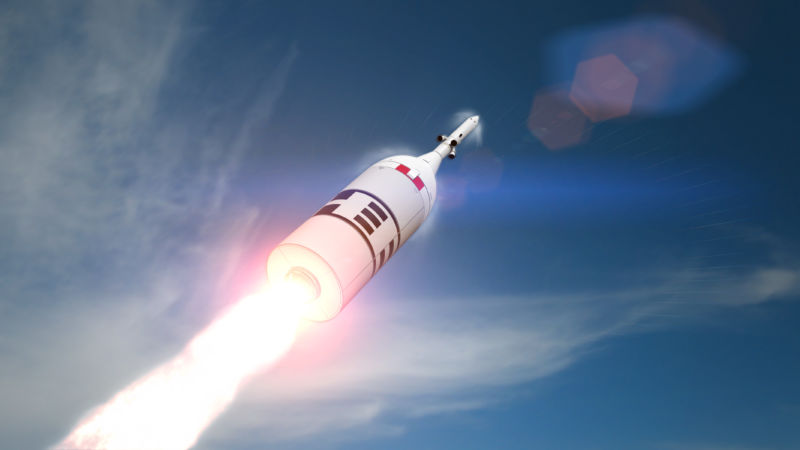
NASA
It's been a long three-and-a-half years since the Orion spacecraft first launched into space in December 2014, making a successful shake-out flight. But now, NASA’s program aimed at building a large, deep-space capsule capable of sending astronauts to and from lunar orbit is finally ramping back up toward a series of test flights.
In less than a year, a boilerplate model of the Orion spacecraft will be jettisoned from its rocket at 55 seconds after liftoff to test the vehicle’s launch abort system. Provided that goes well, about a year after that, the Orion spacecraft will be sent into lunar orbit for longer than a week for a shakedown cruise. Finally, as early as June 2022, two to four astronauts will fly aboard Orion into lunar orbit, sending humans into deep space for the first time since 1972.
This isn’t exactly a rapid cadence of flights, but three missions in four years would represent a remarkable increase from the vehicle’s flight rate to date—one in 13 years. “Our destiny is to explore, so you want to get your tests behind you and get humans on the spacecraft, and start that exploration,” Annette Hasbrook, an assistant manager for the Orion program in Houston, told Ars.
Abort test
A few weeks ago, Johnson Space Center invited reporters to view the Orion spacecraft that will undertake the Ascent Abort-2 test flight next April. The craft was constructed at NASA’s Langley Research Center, and technicians in Houston are outfitting the crew module with 200 sensors. Although no Starman or Mannequin Skywalker will sit inside—there won’t even be seats—the vehicle will have sensors in the vicinity of where astronauts will be seated to determine forces that astronauts would experience during the test.
NASA intends to conduct the abort test in April 2019 at Kennedy Space Center in Florida. A stubby first-stage booster from a Peacekeeper missile, modified by Orbital Sciences Corporation, will lift the Orion crew module and launch abort system to just under 10km, reaching Mach 1.3. At that point, under maximum dynamic pressure, the launch-abort system’s motor will fire, pulling the crew vehicle 3km upward and away from the rocket in just 15 seconds.
The Ascent Abort-2 Orion spacecraft was on display at Johnson Space Center.
Eric Berger
Depictions of the test flight can be seen in the background.
Eric Berger
Don't climb inside, where the spacecraft is being outfitted with 200 sensors.
Eric Berger
There won't be any seats during the test flight.
Eric Berger
Did we mention that this is "America's spacecraft?"
Eric Berger
With this one test, NASA will attempt to gather data for a variety of abort scenarios, so engineers have chosen a target suite of conditions such as angle of attack and velocity that most defines the situations they’re concerned with. “We couldn’t do a worst-on-worst case for one area because it wouldn’t tell us about another area,” said Jon Olansen, manager of the Ascent Abort Crew Module for NASA. “So we wanted to try and find a difficult region that can inform all of the regions.”
The agency will collect data from the test to affirm its simulations for a range of conditions in which something goes wrong with the Space Launch System rocket, and the launch-abort system needs to pull the spacecraft quickly away. If everything works as intended, NASA will be ready to produce a final version of the launch-abort system for the first crewed flight.
America’s spacecraft
This flight, known as Exploration Mission-2, may occur sooner than agency planners had thought. Until now, the biggest hurdle between the first deep space test flight of the Orion vehicle (likely in 2020) and the first crew flight has been the need to refurbish a large “mobile launcher” tower. This structure supports the testing and servicing of the massive SLS rocket, moves it to the launchpad, and provides a platform from which it will launch.
Between the first test flight and second flight of the rocket, NASA had intended to upgrade the SLS rocket’s upper stage to give it more kick in sending larger payloads deeper into the Solar System. This larger and longer upper stage, known as the “Exploration Upper Stage,” will necessitate significant changes to the mobile launcher. The agency estimated it would take 33 months to accomplish this work, creating a nearly three-year delay between the first and second flights of SLS, and accordingly between the uncrewed and crewed deep space test flights of Orion.
Now, however, NASA has said it will build a second mobile launcher for the more powerful version of the SLS rocket. In turn, the agency has decided to fly the first crewed mission of Orion on the original configuration of the SLS rocket, meaning there is no longer the 33-month “bar” between the two flights.
“Being able to pull that bar out and to have the opportunity to get humans into space a little bit earlier is fantastic,” Hasbrook said.This has allowed the Orion program to push the crewed launch of its vehicle forward to June, 2022, about a year earlier than previously anticipated. Officials at NASA headquarters have yet to set a formal launch date for Exploration Mission-2 now that the mobile launcher issue has been solved. A decision is likely to come this summer.
Really, it cannot come soon enough. The agency has been “developing” the Orion spacecraft in one form or another since 2005, and it presently spends about $1.35 billion a year on the program, regardless of when it will fly. If Orion is “America’s spacecraft” as the agency says, it's time for America to see it in action.
Read Again NASA's Orion spacecraft getting closer to finally flying again : https://ift.tt/2rtRo9iBagikan Berita Ini














0 Response to "NASA's Orion spacecraft getting closer to finally flying again"
Post a Comment